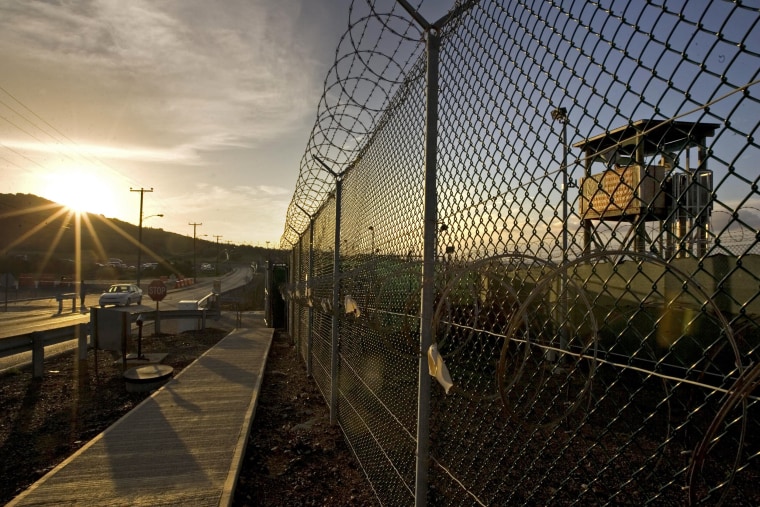As President Barack Obama's term got underway 12 years ago, he took steps toward closing the detention facility at Guantanamo Bay. As we discussed in February, President Joe Biden is ready to finish the job.
With this in mind, the New York Times reported this morning on the administration taking its first steps toward shrinking the prison population.
The Biden administration on Monday transferred its first detainee out of Guantanamo Bay, repatriating a Moroccan man who had been recommended for discharge from the wartime prison starting in 2016 but nevertheless remained there during the Trump years. The transfer of the man, Abdul Latif Nasser, 56, was the first sign of a renewed effort under President Biden to winnow the population of prisoners by sending them to other countries that promise to ensure the men remain under security measures. Mr. Nasser was never charged with a crime.
Circling back to our earlier coverage, the prison's population peaked in 2003 with 680 prisoners. The Bush/Cheney administration began moving detainees out in its second term, and by the time Obama took office, the population was down to 242 prisoners.
Congress made it effectively impossible for the former president to close the facility altogether, but Obama successfully lowered the prison population from 242 to 41.
"As president, I have tried to close Guantanamo," Obama said in a letter to congressional leaders on his last full day in office. "When I inherited this challenge, it was widely recognized that the facility -- which many around the world continue to condemn -- needed to close. Unfortunately, what had previously been bipartisan support for closure suddenly became a partisan issue. Despite those politics, we have made progress."
The point of the progress, obviously, was to reduce the overall population, but it was also intended to appeal to Republicans' sense of fiscal sanity: the smaller the number of detainees, the harder it becomes to justify the massive expense of keeping open a detention facility that houses so few people.
Even if congressional Republicans are inclined to ignore every other consideration, the hope has long been that GOP lawmakers would at least care about wasteful spending: it costs American taxpayers about $13 million per prisoner, per year.
For his part, Donald Trump promised voters he'd reverse the progress, telling the public in 2016, in reference to the Guantanamo Bay prison, "We're gonna load it up with some bad dudes, believe me, we're gonna load it up."
As was true about so many of the Republican's promises, none of this reflected reality. On his first day in office, the number of inmates was down to 41. On Trump's last day in office, the prison sometimes referred to as "Gitmo" had just 40 inmates.
And now, that total is down to 39.
Five months ago, the White House announced plans to shut down the prison once and for all, with the Departments of Defense, State, and Justice planning to work with the White House National Security Council in pursuit of the goal.
Today's developments suggest officials have made some progress, but lowering the number from 39 to zero will be a significant challenge for the administration.
